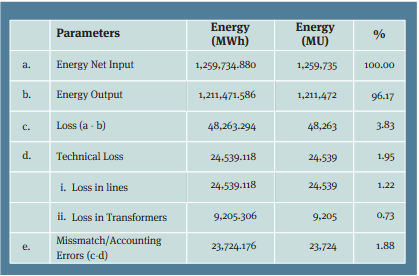A utility wanted to track energy loss in their power transmission system covering a large geographical area. An energy accounting exercise was needed to measure the cumulative input energy, energy flow through power exchange points and total consumption in the administrative area under the utility.
Proper processes and systems needed to be in place to verify the energy supplied by the other entities, as well as accounting of the distribution entities to which the power was then redirected. This would give an insight into the areas, in the power supply infrastructure, where stress on the system was leading tohightechnicallosses.
The turnaround was so dramatic that the loss making utility was able to report profits within 2 years of starting this project.
Energy accounting and loss assessment for the entire state transmission system was to be undertaken. The transmission system comprised over 400 substations (from EHV to 33 KV level). There were almost 5000 interface points, at different voltage levels.
Considering the mammoth task involved, it needed military precision and planning.
Network documentation available with the utility was taken and many areas were surveyed, verified and updated. All possible ways of routing power were identified and metering provided at all exchange points.
The next stage of the project involved collecting meter data over communication network (RMR) and through CMRI (common meter reading instrument) as a backup arrangement wherever the communication infrastructure was poor. The data was processed and analysed; energy accounting undertaken for each voltage level and administrative block. The special features of the service were:
Some of the challenges in the project were to ensure all necessary points in the entire T&D system were metered, timely collection of meter data in every cycle, correction of feeder-DT-consumer relationship and a joint ownership, with the utility, to arrive at correct energy accounting, undertaking necessary actions by analysing the month-on-month reports.
Initially there was an energy mismatch within the substation itself, which were corrected by identifying and addressing the root causes. Energy accounting presented the break down of energy flow within the system. Also, the technical loss in the lines and transformers was reported which helped monitor theloading ofthe lines and otherassets.
Within a relatively short span of time, the utility used the energy accounting process to identify the high loss areas. These, in turn, were targeted to reduce the losses in the network. The turnaround was so dramatic that the loss-making utility was able to report profits within 2 years of starting this project.

